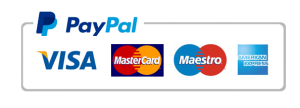measuring employee engagement 1
Overview
For this assessment, you will use a case study of an organization that has implemented employee engagement programs and, in 2–3 pages, reflect on how to measure the implementation of such programs.
By successfully completing this assessment, you will demonstrate your proficiency in the following course competencies and assessment criteria:
- Competency 1: Analyze HRM programs and other related systems within an organization that support employee engagement and commitment.
- Describe an organization’s employee engagement programs.
- Competency 2: Examine evidence-based HRM best practices among organizations that demonstrate an employee-centered culture.
- Assess how to best measure the effectiveness of employee engagement programs.
- Report on how measurement tools have been used to measure effectiveness in professional environments.
- Assemble a list of five best practices for measuring the success of employee engagement programs.
- Competency 3: Analyze HRM’s role in adhering to laws and regulations that ensure employee rights and manage risk.
- Generate a list of legal considerations when conducting research on HRM programs and initiatives.
- Generate a list of ethical considerations when conducting research on HRM programs and initiatives.
- Competency 5: Communicate in a manner that is professional and consistent with expectations for HR professionals and master’s level programs.
- Communicate in a manner that is professional and consistent with expectations for HR professionals and master’s level programs.
Competency Map
Check Your ProgressUse this online tool to track your performance and progress through your course.
Context
Assessing the effectiveness of an employee-centered environment is an important responsibility for HRM leaders. In today’s organization, HRM must demonstrate that evidence-based measurements are available and effective in measuring the links between employee engagement and organizational success. Many of the processes that are part of measurement are scientific in nature and as such are complex and require extensive knowledge and background. This knowledge is both professional and technical and there are many challenges that are present when measuring employee engagement. These areas are critical in establishing that HRM deliverables make a difference in organizational effectiveness. When leaders at all levels of the organization (executives, managers, and supervisors) are comprehensively aware of the leadership climate in the organization they are able to make better decisions. The effects of leadership on the attitudes and opinions of employees can be understood and serve to shape polices to enhance employee engagement.
Questions to Consider
To deepen your understanding, you are encouraged to consider the questions below and discuss them with a fellow learner, a work associate, an interested friend, or a member of the business community.
- What are the specific cultural and leadership climate characteristics that demonstrate the need for increased employee engagement?
- What are the key concepts of measuring the efficacy of employee engagement and organizational effectiveness?
- What are some common mechanisms with which to harvest employee opinions and attitudes?
Resources
Suggested Resources
The following optional resources are provided to support you in completing the assessment or to provide a helpful context. For additional resources, refer to the Research Resources and Supplemental Resources in the left navigation menu of your courseroom.
Library Resources
The following articles from the Capella University Library are linked directly in this course:
- Centaur Communications Ltd. (2007). Employee engagement: How to measure employee engagement. Employee Benefits, 40.
- Gruman, J. A., & Saks, A. M. (2011). Performance management and employee engagement. Human Resource Management Review, 12(2), 123–136.
- Handa, M., & Gulati, A. (2014). Employee engagement: Does individual personality matter. Journal of Management Research, 14(1), 57–67.
- Lockwood, N. R. (2007). Leveraging employee engagement for competitive advantage: HR’s strategic role. HRMagazine, 52(3), 1–11.
- Lockwood, N. R. (2006). Maximizing human capital: Demonstrating HR value with key performance indications. HRMagazine, 51(9), 1–11.
- Soyars, M., & Brusino, J. (2009). Essentials of engagement. T+D, 63(3), 62–65.
- Tyler, K. (2011.) Prepare for impact. HRMagazine, 56(3), 53–56.
Course Library Guide
A Capella University library guide has been created specifically for your use in this course. You are encouraged to refer to the resources in the MBA-FP6242 – Building Organizational Effectiveness Library Guide to help direct your research.
Internet Resources
Access the following resources by clicking the links provided. Please note that URLs change frequently. Permissions for the following links have been either granted or deemed appropriate for educational use at the time of course publication.
- Chartered Institute of Personnel and Development. (2011). Management competencies for enhancing employee engagement. Retrieved from http://www.cipd.co.uk/binaries/management-competen…
- Bayt.com. (n.d.). Top strategies to enhance employee engagement. Retrieved from http://www.bayt.com/en/employer-article-6741/
Bookstore Resources
The resource listed below is relevant to the topics and assessments in this course and is not required. Unless noted otherwise, this resource is available for purchase from the Capella University Bookstore. When searching the bookstore, be sure to look for the Course ID with the specific –FP (FlexPath) course designation.
- Macey, W. H., Schneider, B., Barbera, K. M., & Young, S. A. (2009). Employee engagement: Tools for analysis, practice, and competitive advantage. Hoboken, NJ: Wiley-Blackwell.
Assessment Instructions
Use the Capella University Library to locate, in scholarly journals or trade publications, a case study or profile of an organization that has implemented employee engagement programs.Using the example or case study you selected, reflect on how to measure an organization’s implementation of employee engagement programs. In a 2–3-page paper, complete the following:
- Describe the employee engagement programs implemented in the organization.
- Drawing on your understanding of measuring effectiveness of employment engagement programs from both personal experience and the literature of the field, assess how to best measure the effectiveness of these programs. Include in your assessment what you know about the measurement efforts already undertaken by the organization.
- Generate a list of legal considerations when conducting research on HRM programs and initiatives.
- Generate a list of ethical considerations when conducting research on HRM programs and initiatives. Consider here, too, codes of conduct unique to particular industries that should be followed.
- Report on how these measurement tools can be or have been applied to your own work experiences. Provide examples of common attributes and questions that appear in measurement instruments designed to survey employee opinions and attitudes toward the organization.
- Assemble a list of five best practices for measuring an organization’s success at implementing employee engagement programs. To do so, draw on your own experience, as well as on articles in trade publications and research in scholarly literature.
Additional Requirements
- Written communication: Your writing should be free of errors that detract from the overall message.
- APA formatting: Your paper should be formatted according to APA (6th ed.) style.
- Length: 2–3 typed and double-spaced pages.
- Font and font size: Times New Roman, 12-point.
Measuring Employee Engagement Scoring Guide
| Criteria | Non-performance | Basic | Proficient | Distinguished |
|---|---|---|---|---|
| Describe an organization’s employee engagement programs. |
Does not describe an organization’s employee engagement programs. | Describes incompletely an organization’s employee engagement programs. | Describes an organization’s employee engagement programs. | Describes, in detail, an organization’s employee engagement programs; description includes the goals of each program. |
| Assess how to best measure the effectiveness of employee engagement programs. |
Does not assess how to best measure the effectiveness of employee engagement programs. | Identifies a way to measure the effectiveness of employee engagement programs, but the measure is not the best option for those programs. | Assesses how to best measure the effectiveness of employee engagement programs. | Assesses how to best measure the effectiveness of employee engagement programs; identifies why that measure as opposed to other possibilities is best for the specific case. |
| Generate a list of legal considerations when conducting research on HRM programs and initiatives. |
Does not generate a list of legal considerations when conducting research on HRM programs and initiatives. | Generates an incomplete list of legal considerations when conducting research on HRM programs and initiatives. | Generates a list of legal considerations when conducting research on HRM programs and initiatives. | Generates a list of legal considerations when conducting research on HRM programs and initiatives; grounds the list in research and the literature of the field. |
| Generate a list of ethical considerations when conducting research on HRM programs and initiatives. |
Does not generate a list of ethical considerations when conducting research on HRM programs and initiatives. | Generates an incomplete list of ethical considerations when conducting research on HRM programs and initiatives. | Generates a list of ethical considerations when conducting research on HRM programs and initiatives. | Generates a list of ethical considerations when conducting research on HRM programs and initiatives; grounds list in research and the literature of the field. |
| Report on how measurement tools have been used to measure effectiveness in professional environments. |
Does not report how measurement tools have been used to measure effectiveness in professional environments. | Lists measurement tools that have been used to measure effectiveness in professional environments, but does not report on how they have been used. | Reports how measurement tools have been used to measure effectiveness in professional environments. | Evaluates the measurement tools that have been used to measure effectiveness in professional environments. |
| Assemble a list of five best practices for measuring the success of employee engagement programs. |
Does not assemble a list of best practices for measuring the success of employee engagement programs. | Assembles a list of less than five best practices for measuring the success of employee engagement programs. | Assembles a list of five best practices for measuring the success of employee engagement programs. | Assembles a list of five or more best practices for measuring the success of employee engagement programs; reflects evidence-based HRM best practices, and grounds the list in research and the literature of the field. |
| Communicate in a manner that is professional and consistent with expectations for HR professionals and master’s level programs. |
Does not communicate in a manner that is professional and consistent with expectations for HR professionals and master’s level programs. | Communicates in a manner that is inconsistent with expectations for HR professionals and master’s level programs. | Communicates in a manner that is professional and consistent with expectations for HR professionals and master’s level programs. | Communicates in a manner that is professional, scholarly, and consistent with expectations for HR professionals and master’s level programs; adheres to APA guidelines and presents work that is appropriate for publication. |


